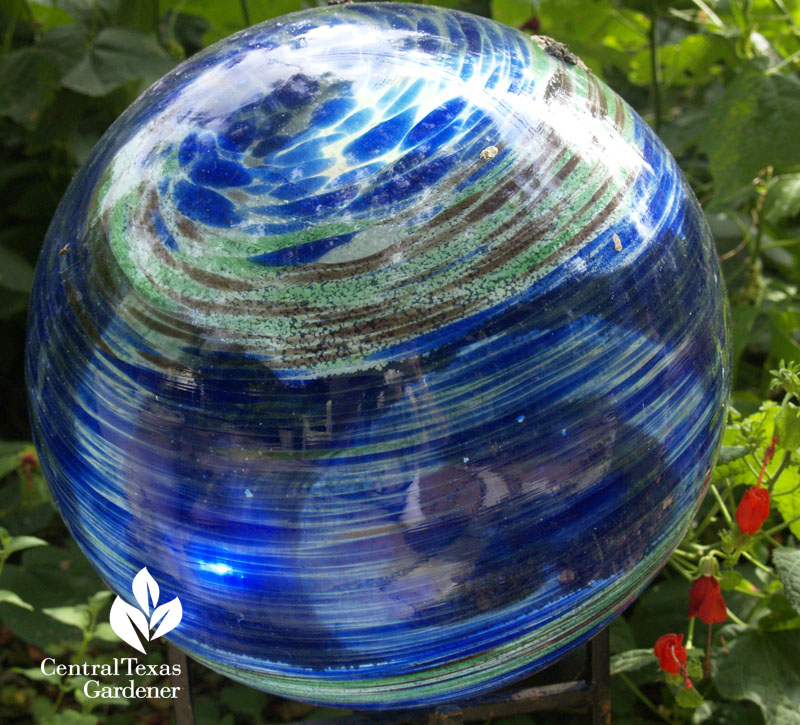July 5, 2012
Garden fireworks!
To celebrate red, white and blue this week, my new blue gazing ball glows against firecracker red Turk’s cap!

White native Plumbago scandens droops over soft leaf yucca (Yucca recurvifolia).

Non-native blue plumbago (Plumbago auriculata) sparked some attention from this Snowberry Clearwing moth, too speedy for slow me to nab a super shot. From a distance, it resembled a hummingbird. Some people refer to it as the “bumblebee moth.”


The sparks really fly from this native hibiscus (Hibiscus martianus). Since it’s probably not cold hardy, we enjoy its flare from a patio container.

Okay, purple passion vine/passionflower isn’t exactly blue, but it sure is setting off fireworks for the frenzied butterflies mating and laying eggs on its leaves.

Mine is a hybrid with five-lobed leaves, not the native Passiflora incarnata with three-lobed leaves, but it’s definitely related. It does spread like mad, and I need to pull it off some trees it’s shading. Still, I hate to pull one that has a happy caterpillar chomping away. I examine closely for tiny eggs, too.
Uruguayan Firecracker Plant is orange, but it’s name says it all. It’s also called hummingbird bush (since it attracts them) and a bunch of other names. I know it as Dicliptera suberecta, since it’s fun to say!

Also called hummingbird bush is native Flame acanthus (Anisacanthus quadrifidus var. wrightii), a perennial shrub that attracts butterflies, too.

A showy white with lots of different names is Datura (Datura wrightii). Commonly called Jimsonweed or Angel’s trumpet (not to be confused with Brugmansia, a related genus), Daphne makes it her Plant Pick this week.

Daphne explains how to grow this native annual (so well-known through Georgia O’Keefe paintings). It attracts night-pollinating moths and is deer resistant, but all plant parts are highly toxic to us.
Fireworks you don’t want to set off in your garden is a fire. This week, Tom joins Patrick Allen from the Texas Forest Service for a few tips on garden firewise safety.


Check out Texas Forest Service for more about how to landscape safely. Click on the icon to download Firewise Landscaping for step-by-step instructions and plant information.
Firewise Communities includes fire safe plant lists for around the country. I’ve checked out many of the lists from other states, and many apply to Texas.
Whether for fire safety or to reduce our lawns, how close to our trees can we hardscape? Daphne answers this great question from Emily Keith, who wants to reduce lawn space but protect her trees.

Keeping gutters clean is one firewise safety tip. But, they’re also a breeding ground for mosquitoes with even a few drops of rain. John Dromgoole explains how to fend off mosquitoes in your gutters and in your garden, without harming the beneficials heading for your plants.

On tour, visit designer Glee Ingram’s firewise native plant restoration on a rocky slope above a greenbelt.
Stay cool until next week! Linda
tags:

